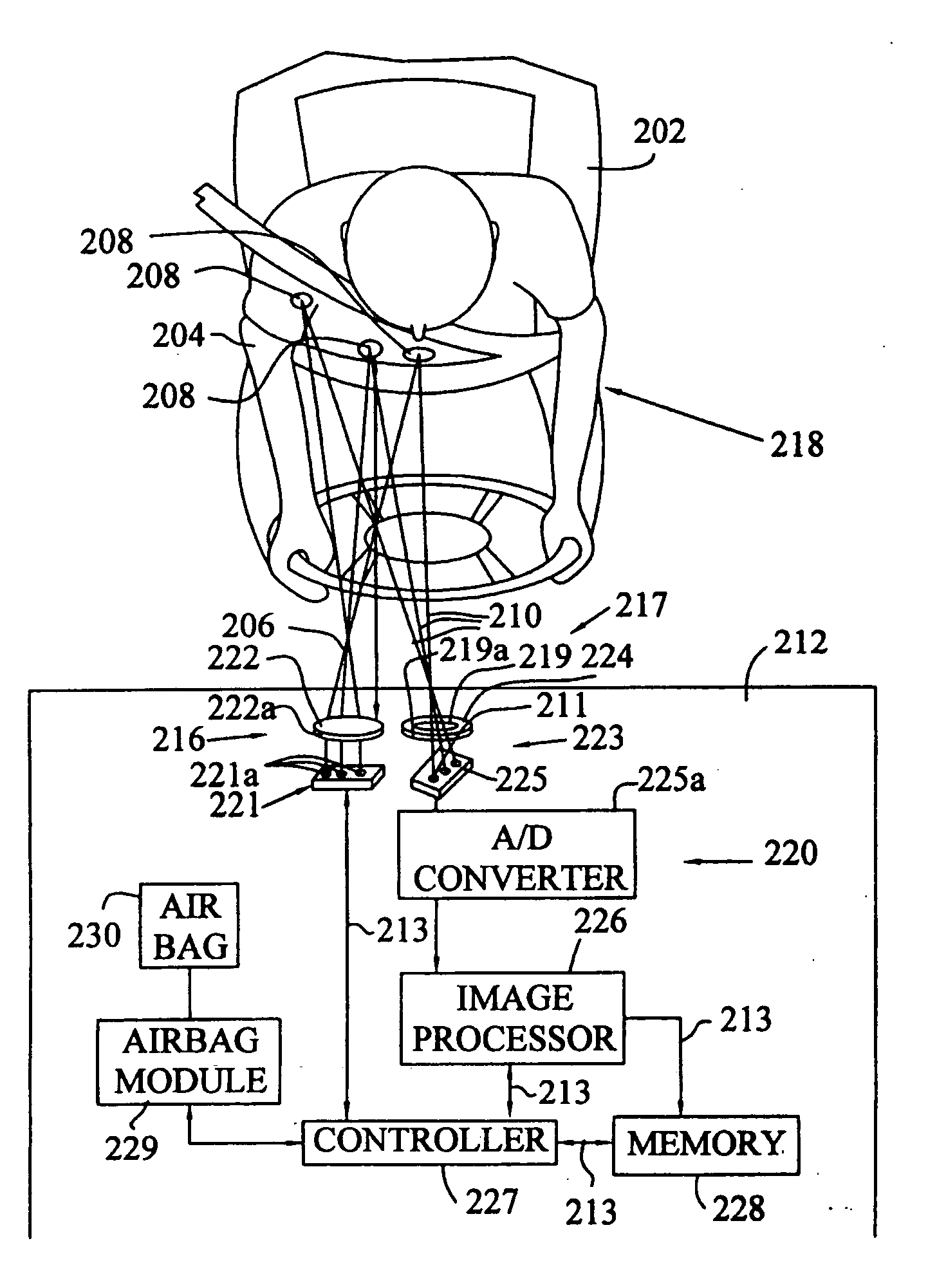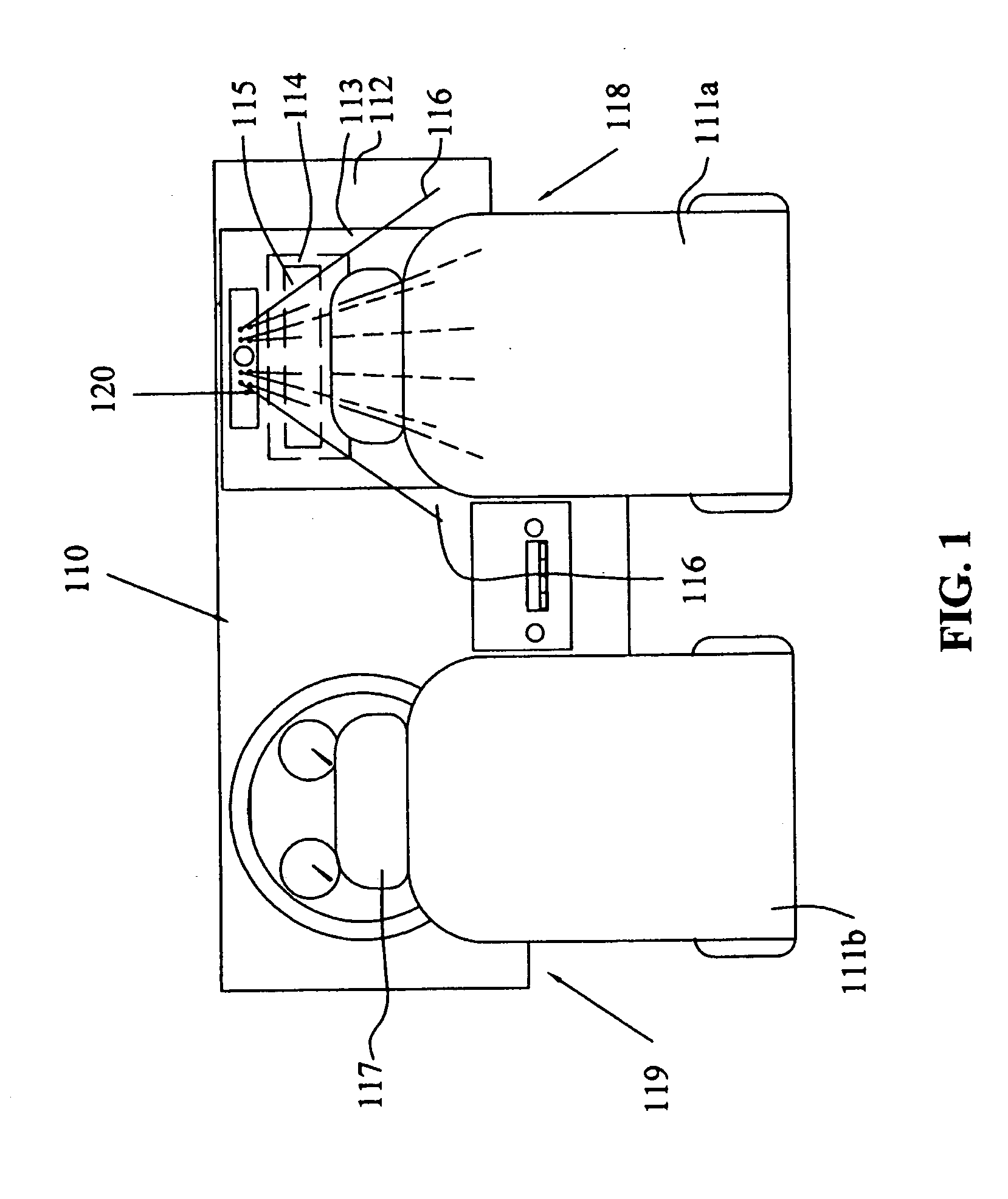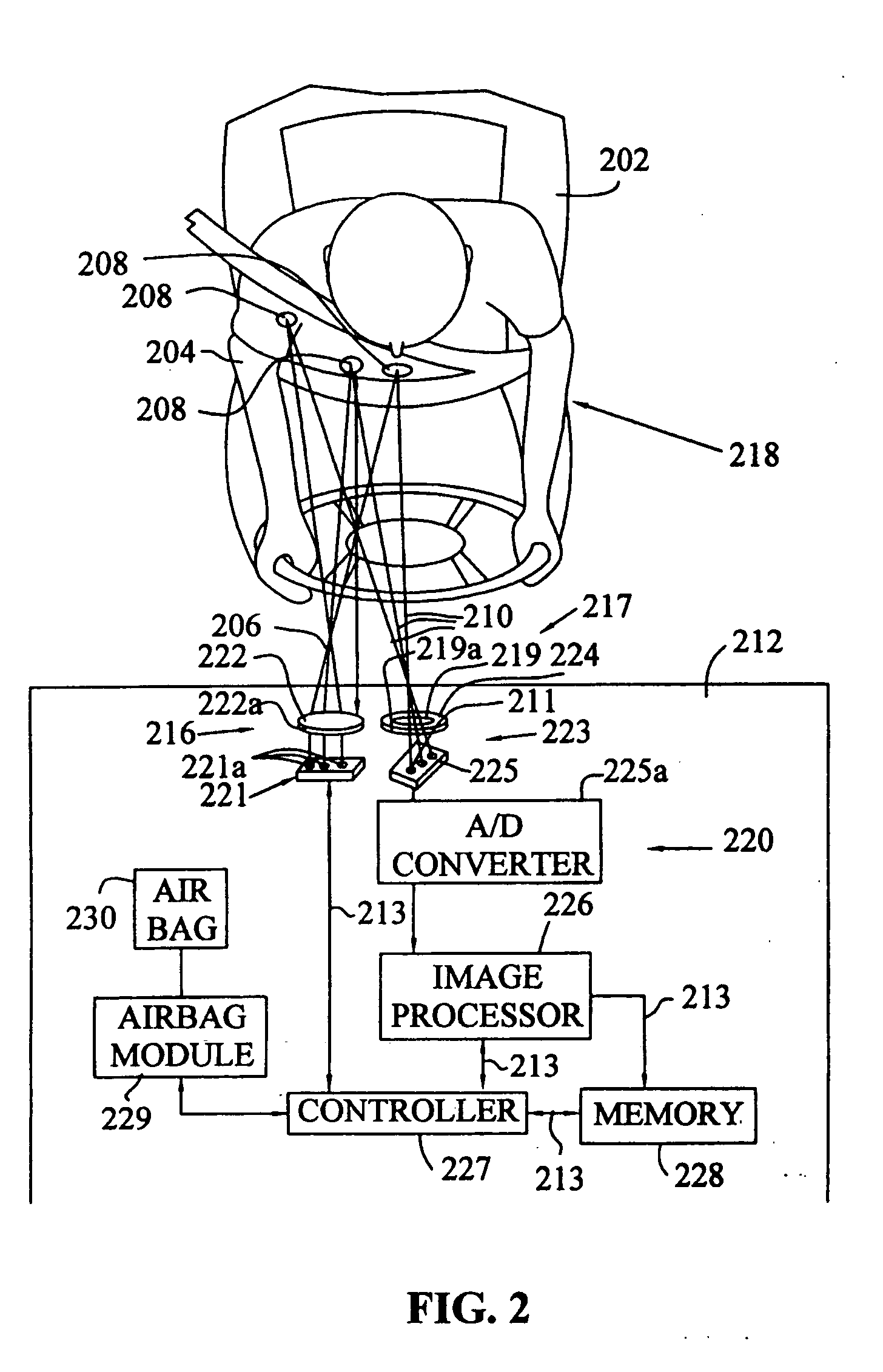Infrared proximity sensor for air bag safety
- Summary
- Abstract
- Description
- Claims
- Application Information
AI Technical Summary
Benefits of technology
Problems solved by technology
Method used
Image
Examples
Embodiment Construction
[0022] The embodiments disclosed below are not intended to be exhaustive or limit the invention to the precise forms disclosed in the following detailed description. Rather, the embodiments are chosen and described so that others skilled in the art may utilize their teachings.
[0023] The present invention provides a system and method for determining the location of a vehicle occupant, for example, whether automobile vehicle occupants are within an air bag deployment zone. As described above, the air bag deployment zone varies with different vehicles and different air bag deployment schemes. Generally, a safe air bag deployment area is considered to be a hemisphere with a minor radius of 200 to 300 millimeters directly in front of the air bag door. However, a safe air bag deployment zone is determined in accordance to the specifications of the vehicles in which the air bags are implemented. As will be described below, the object proximity sensor of the present invention monitors this...
PUM
 Login to View More
Login to View More Abstract
Description
Claims
Application Information
 Login to View More
Login to View More - R&D
- Intellectual Property
- Life Sciences
- Materials
- Tech Scout
- Unparalleled Data Quality
- Higher Quality Content
- 60% Fewer Hallucinations
Browse by: Latest US Patents, China's latest patents, Technical Efficacy Thesaurus, Application Domain, Technology Topic, Popular Technical Reports.
© 2025 PatSnap. All rights reserved.Legal|Privacy policy|Modern Slavery Act Transparency Statement|Sitemap|About US| Contact US: help@patsnap.com



